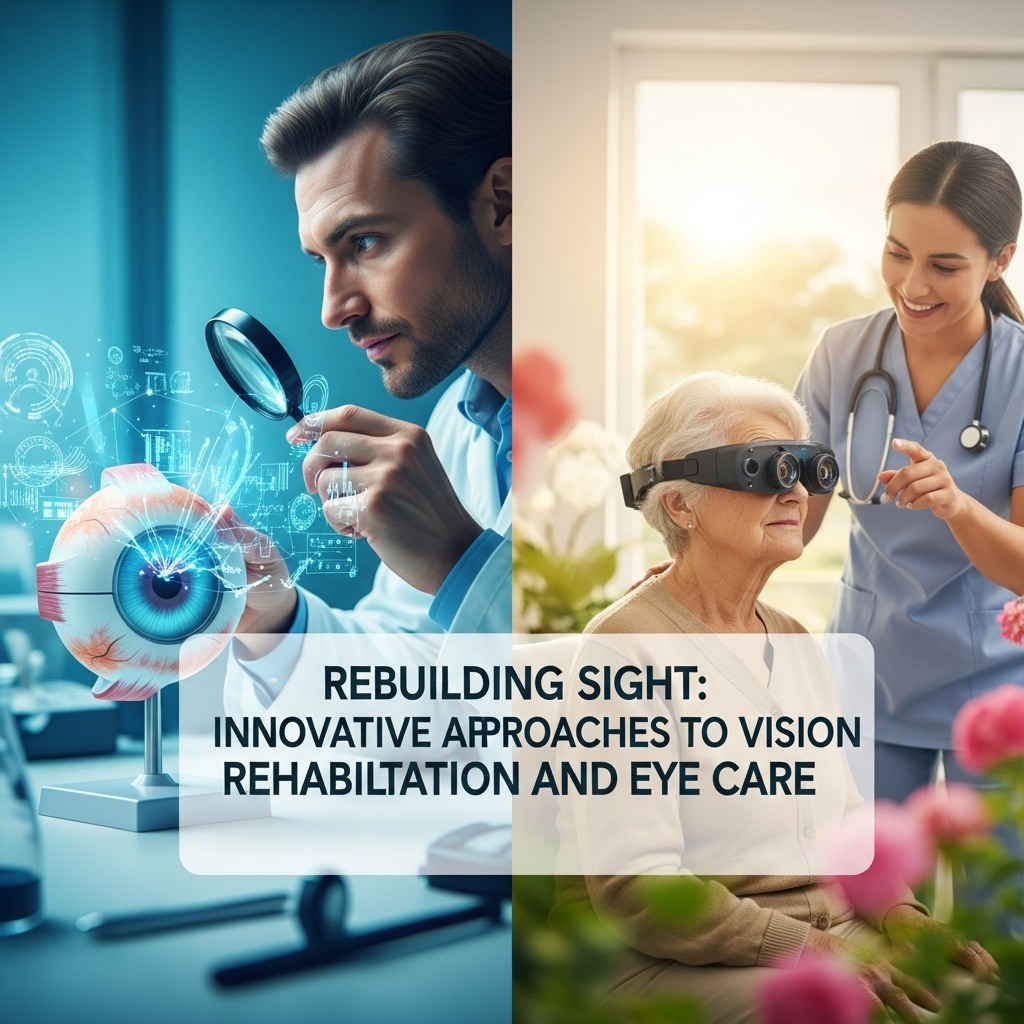
Introduction to Rebuilding Sight
Vision loss can have a profound impact on an individual's quality of life, affecting their ability to perform daily tasks, maintain independence, and engage in activities they enjoy. While some causes of vision loss are irreversible, advances in medical technology and rehabilitation techniques have led to the development of innovative approaches to vision rehabilitation and eye care. This article will explore the latest methods and strategies being used to rebuild sight and improve the lives of individuals with visual impairments.
Understanding Vision Rehabilitation
Vision rehabilitation is a process that helps individuals with visual impairments to adapt to their condition and develop new skills to compensate for their vision loss. This can include a range of techniques, such as visual therapy, assistive technology, and adaptive devices. The goal of vision rehabilitation is to enable individuals to achieve their maximum level of independence and participate fully in daily activities. For example, a person with macular degeneration may learn to use magnifying glasses or a closed-circuit television (CCTV) system to read and perform tasks.
Innovative Surgical Techniques
Recent advances in surgical techniques have led to the development of new procedures that can help to restore vision in individuals with certain types of vision loss. For example, corneal transplantation is a surgical procedure that involves replacing a damaged or diseased cornea with a healthy one from a donor. This procedure can be used to treat conditions such as keratoconus, Fuchs' dystrophy, and corneal scarring. Another example is the use of implantable lenses, such as intraocular lenses (IOLs), which can be used to treat cataracts and other conditions that affect the lens of the eye.
Assistive Technology and Devices
Assistive technology and devices play a crucial role in vision rehabilitation, enabling individuals with visual impairments to perform daily tasks and activities with greater ease and independence. Examples of assistive technology include screen readers, which can be used to read text aloud, and magnification software, which can be used to enlarge text and images on a computer screen. Other devices, such as canes and guide dogs, can be used to assist with mobility and navigation. For instance, a person with retinitis pigmentosa may use a white cane to navigate their home and community, while a person with age-related macular degeneration may use a portable electronic magnifier to read menus and signs.
Low Vision Rehabilitation
Low vision rehabilitation is a type of vision rehabilitation that is specifically designed for individuals with significant visual impairments. This type of rehabilitation focuses on helping individuals to make the most of their remaining vision, using techniques such as magnification, illumination, and contrast enhancement. Low vision rehabilitation can be provided by a range of professionals, including optometrists, occupational therapists, and low vision specialists. For example, a low vision specialist may work with an individual to develop a personalized plan for using assistive devices and adapting their home and work environments to meet their visual needs.
Virtual Reality and Vision Therapy
Virtual reality (VR) technology is being increasingly used in vision therapy to help individuals with visual impairments to improve their vision and develop new skills. VR can be used to create simulated environments that mimic real-world situations, allowing individuals to practice and develop their visual skills in a safe and controlled way. For example, a person with amblyopia (lazy eye) may use VR to practice eye movements and develop their depth perception. Another example is the use of VR to treat conditions such as convergence insufficiency, where the eyes have difficulty working together.
Conclusion and Future Directions
In conclusion, rebuilding sight and improving vision is a complex and multifaceted process that requires a range of innovative approaches and techniques. From surgical procedures and assistive technology to low vision rehabilitation and virtual reality, there are many ways to help individuals with visual impairments to adapt and thrive. As technology continues to advance and new treatments and therapies are developed, it is likely that we will see even more innovative approaches to vision rehabilitation and eye care in the future. By staying at the forefront of these developments and providing access to the latest treatments and technologies, we can help to improve the lives of individuals with visual impairments and enable them to reach their full potential.
